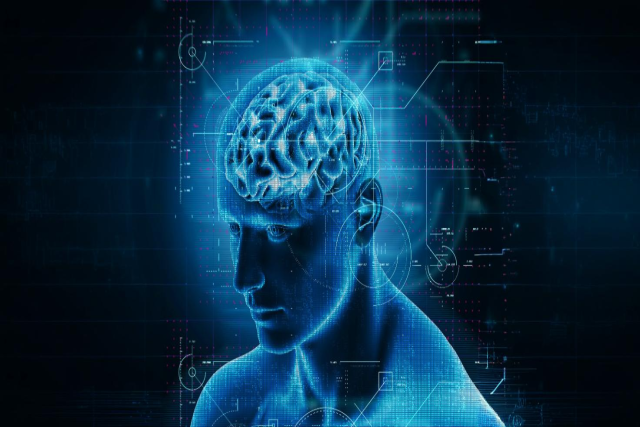
The history of brain-computer interfaces goes all the way back to the mid-20th century when early researchers first began to discover the brain and machine relationship. Brain scientists in the 1960s discovered that electrodes on the scalp could monitor electrical impulses in the brain, which was referred to as electroencephalography (EEG).These discoveries prompted the creation of BCIs in the future, with the first successful demonstration in the 1970s in animals of controlling devices from brain signals. Yet it was not until the latter part of the 1990s that the first brain-machine interfaces were created, with the goal of allowing individuals to control prosthetic limbs or computer cursors through thought.
BCI Milestones and Breakthroughs
The 21st century witnessed an explosion in BCI development, with several milestones defining the progress of the technology. In 2006, a breakthrough was achieved when researchers at the University of Pittsburgh implanted a device into a rhesus monkey's brain, allowing the animal to move a robotic arm using its mind. This test was a turning point in the field, as it showed that BCIs have the ability to restore lost motor functions. Several years later, in 2012, the first human tests using a BCI were completed, allowing paralyzed patients to be able to move a computer cursor.
The Evolution of Brain-Computer Interface Technologies
With advancing BCI technology, the methods of measuring and interpreting brain activity also improved. BCIs first used cumbersome wired systems, which were eventually displaced by more advanced, wireless technology. The invention of non-invasive methods such as EEG facilitated more comfortable, less invasive brain monitoring, although it was less precise than the use of implanted electrodes. With time, more invasive techniques by means of microelectrode arrays, as designed by Neuralink, came to allow readings of greater resolutions of brain action, enhancing BCIs' capabilities in real-life use. They have set the stage for the transition of BCIs from trial to actual utilization.
Brain-Computer Interface Progress
One of the main developments in BCI technology has been the advancement of increasingly complex algorithms to decipher brain signals. Machine learning has been an important factor, and AI-powered systems can now anticipate and decode the user's intent with ever more accuracy.
Another important development in BCI technology is the miniaturization of equipment. Contemporary BCIs are shrinking, making them lighter and more wearable, decreasing the invasiveness of these systems. This is especially relevant in clinical applications, where patients have to wear devices for long periods of time.
The History of Brain-Computer Interfaces in Medicine
The medical community has been one of the main domains where BCIs have proved to be useful. BCIs initially were employed to help people with severe physical impairments, allowing them to control computers, prosthetic limbs, and even wheelchairs through their minds. The initial success stories in this field were from people with spinal cord injuries, who could control a robotic arm or move a cursor on a screen using BCIs. In the last decade, progress in neurotechnology has greatly enhanced the accuracy of BCIs, enabling more natural movement and increased functionality in assistive devices.
They translate sound waves into electrical impulses that stimulate the nerve of hearing, enabling users to hear sound. With developing technology in BCIs, upcoming models of such devices may be able to enhance sound quality so it is more natural and dynamic. Scientists are also investigating BCIs that might restore vision, memory, and even motor function in neurological disorder patients.
The Effects of Advances in BCI on Human Augmentation
Although BCIs have thus far been aimed at medical use, interest is growing in their potential to upgrade human performance beyond normal capacity. Though these concepts might seem science fiction, current experiments in brain modulation may bring about advances that extend the limits of human thought.
Aside from cognitive improvement, BCIs can also change the way industries like gaming and entertainment operate. BCIs are already being developed by companies to be used in virtual and augmented reality worlds, where users can control their experience through mere thoughts.
Challenges and Ethical Considerations in BCI Development
In spite of the fast development and promising prospects of BCIs, there are some challenges. One of the greatest challenges is the complexity of the human brain. Although technology has enabled scientists to record and decode brain signals more accurately, the brain's complexity hinders it from being comprehensively understood how neural networks function and how they can be controlled. The possibility of manipulating the human mind or controlling the brain with external devices raises fundamental questions about human identity and autonomy. Also, the availability of BCI technology is an issue, as it may widen current social disparities if only a privileged few have access to these augmentations.
The Future of Brain-Computer Interfaces
The future of BCIs is bright with great promise. As the technology continues to advance, we anticipate BCIs to become part of daily life, from medicine to entertainment. The possibility of BCIs to amplify human abilities and restore lost function paints a picture of a future where technology and the human brain are in harmony. But as we press on with extending the limits of what BCIs can do, it is imperative that ethical factors keep up with technological developments, so that the advantages of this groundbreaking technology are distributed fairly and responsibly.






